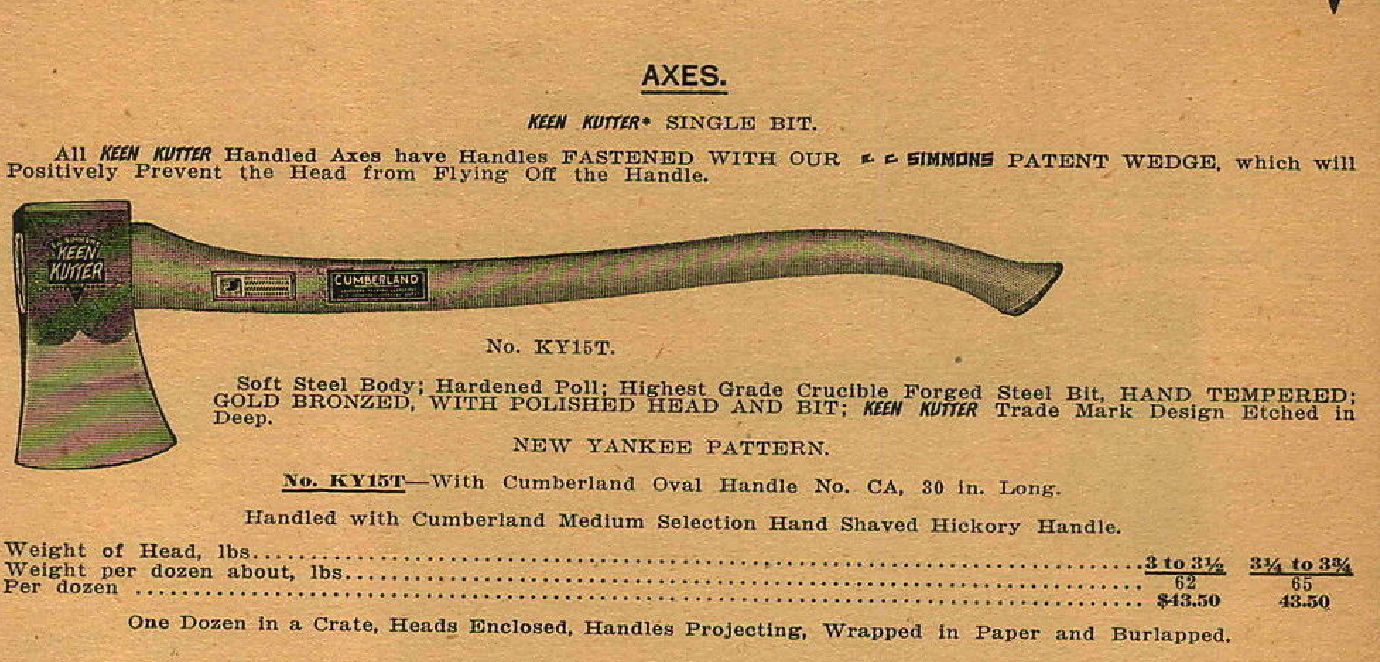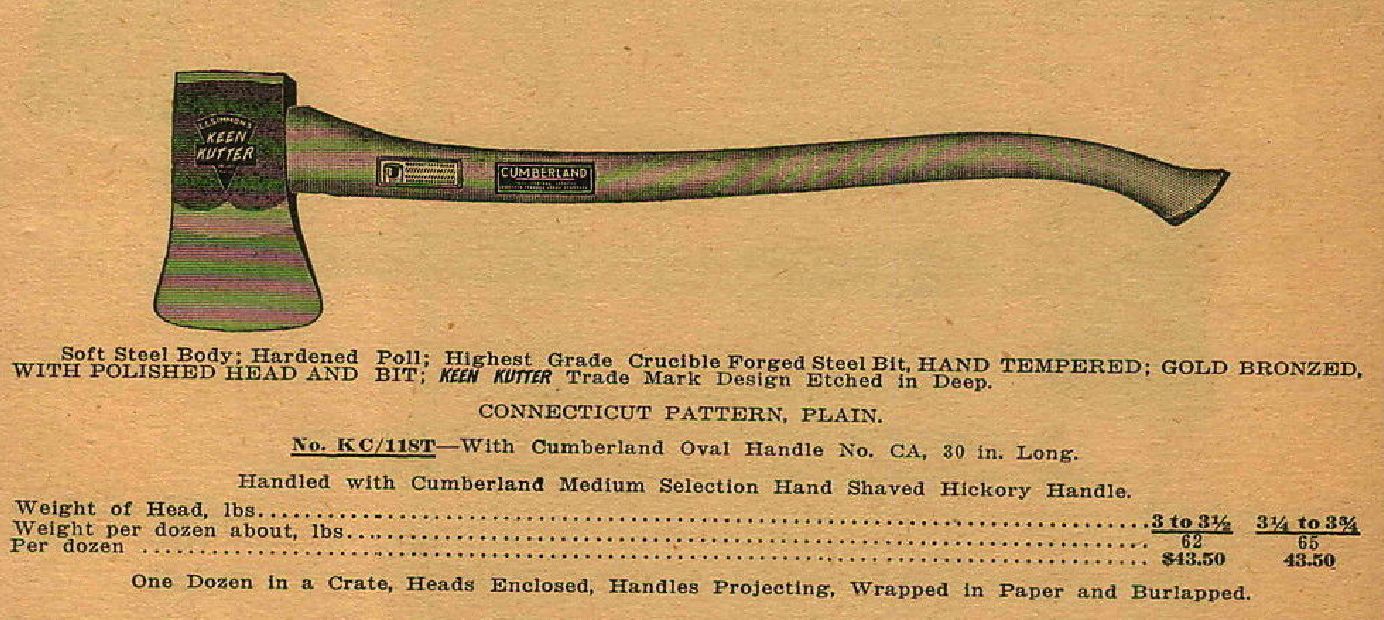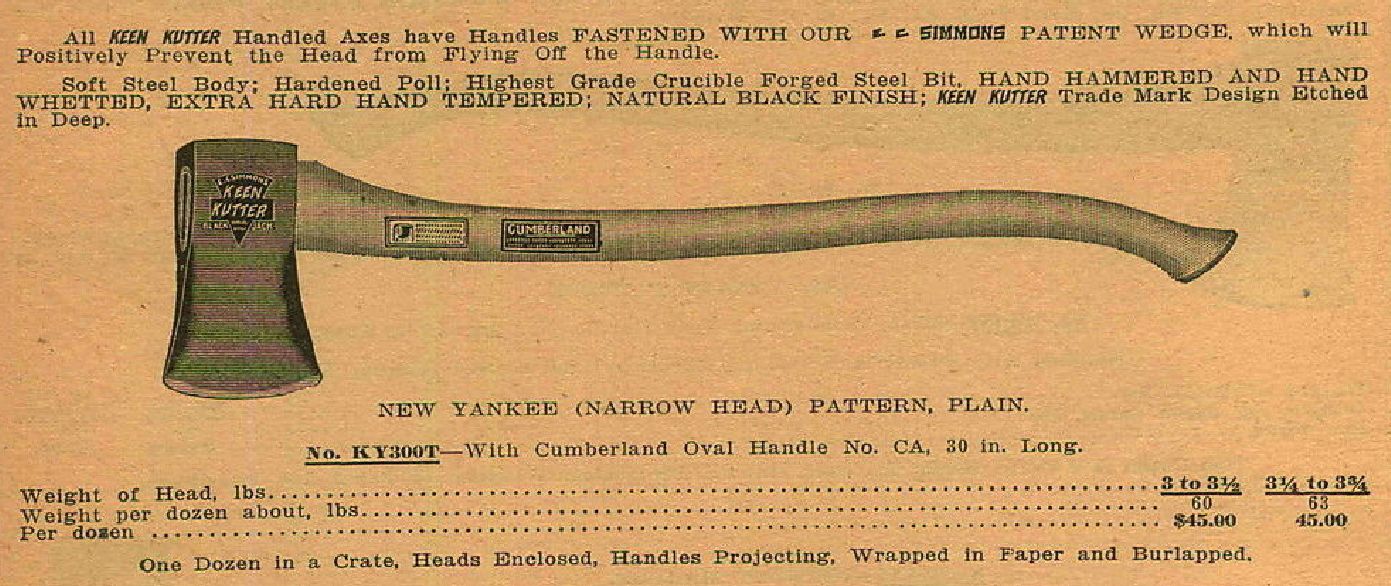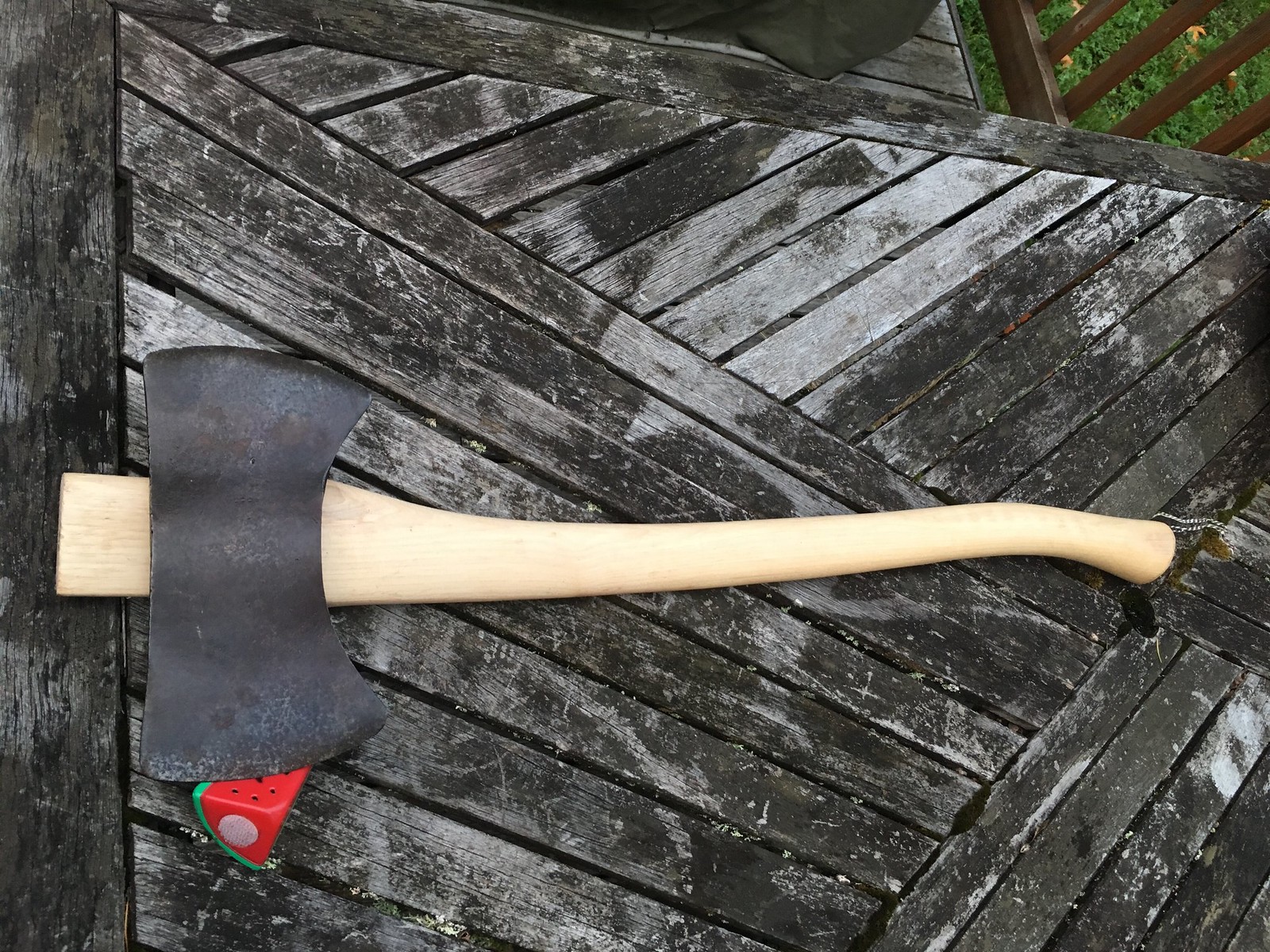Bob, since you made me think more about it. That is what we do lol.
I just held a new standard-sized single bit handle up to several double bits and there are section/corners of open space left on either side of the handle going into the narrow portion of the eye.
That handle's tongue fills the first half inch or so of a Plumb rafting pattern before sticking without molestation so I'm operating on the assumption that it's standard sized (came from a military surplus store). It actually may even be a little big compared to some. The rest of it is ugly and fat, that is for sure.
I
could shave down the other side and put it in there but "small on the bottom" would mean even "smaller at the top" were it widens.
Questions then. So, a single bit handle in a double bit head would be a style or a handle choice? A curved handle built with more material in the tongue to take on a wider eye would be a different type of handle? An Adirondack handle?
Now, I have no idea if the
double shoulder does an Adirondack handle make but a boy's axe sized "Adirondack" would be pretty neat I believe.
You know, it also could just be the three heads I grabbed as well - an old insert bit butterfly looking thing, 4lb WV US90, and an unmarked swamping pattern. The butterfly/felling one I would guess to have been made maybe a little before or around the time-frame mentioned in that news article.
It might well be that nice Old-School handles were in fact wider at the tongue front to back than what we have now or have had for quite a while. In that case it would simply be altering existing stock to be accepted by the longer oval of a double bit eye?
I don't know anything more than we have going here but it's interesting - can someone else try a quick tongue-eye match-up?














 AdironackCruiser?
AdironackCruiser?